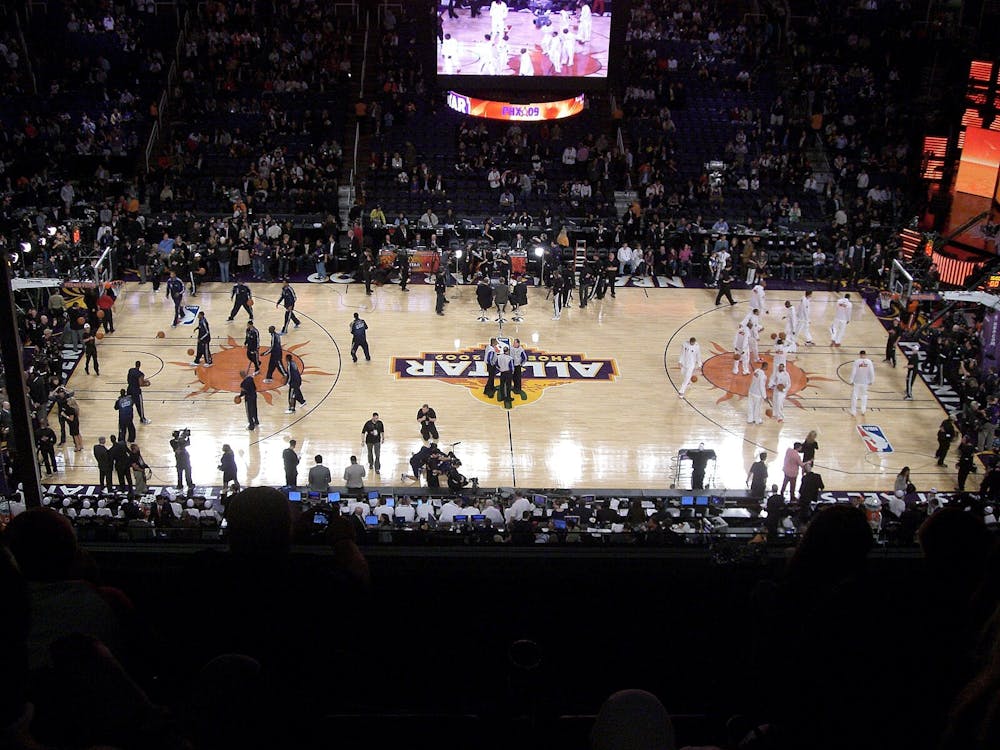Last month, the NBA All-Star Game reached an all-time low. The Eastern Conference defeated the Western Conference 211-186, yet it felt like it was over before it started.
Even Commissioner Adam Silver couldn’t hide his disapproval during the trophy presentation at the end. For years, fans have been begging for a more competitive All-Star atmosphere, but it feels like no matter what the league does, the results are still the same.
This year, the NBA returned to the East-West format for the first time since 2017, but the game was over at halftime. As someone who is a huge basketball fan, this was probably the first year I stopped watching the All-Star Game before halftime. I’ve spent the last few weeks mulling over how to fix the All-Star Game, and I’ve come up with some solutions to make the game more competitive.
Make it a half-court game
One of the biggest reasons why the last few All-Star Games have been historically bad is because of the lack of effort. The amount of fastbreak dunks and jogging back on defense contributes to the scoreboard being so lopsided. Turn on any All-Star Game after 2013, and you’re bound to see players jogging back on defense, allowing the other team to get fastbreak dunks, and the cycle continues on the other end.
The emphasis from fans has been to see more defense and engagement. By making it a half-court game, teams are forced to be more strategic in scoring the ball, more energy is saved because less ground is being traveled and most importantly this style will encourage players to take their matchups more seriously.
A great reference point for this style of basketball is the BIG3. Ice Cube founded the league back in 2017, and it was a massive hit, not only because it featured retired NBA players, but the style resembled a pickup game. The only downside was that the players were unathletic, and it wasn’t necessarily high-level basketball because it had been years since most players competed at a high level.
The point is that this pickup-style format would make the game more entertaining, because it forces players to be more engaged. It may remove the flashy dunks, but in this case, there needs to be a tradeoff if the desire is a more competitive game.
Target score instead of game clock
In 2020, the NBA introduced the target score format in the NBA All-Star Game. The target score was revealed at the beginning of the fourth quarter and served as a replacement for the game clock. This gave the players a goal to hit, making the game more competitive. When both teams know what score it takes to win, it makes every possession so valuable.
The result was a success, as the 2020 All-Star Game is widely considered to be one of the best ever. Even though the subsequent games were not as entertaining (with the exception of 2022), this format gave the game a pickup feel.
For the fans, each of the previous three quarters was decided by who scored the most points after each period. The winning team of each quarter donated their earnings to charity. In my revised All-Star Game, the players on the winning team will also receive a cash prize, similar to the In-Season Tournament reward. Both teams in this format will have something to play for.
Separate All-Star teams by conference and division
One format that the NHL does that I would love to see the NBA adopt is separating the All-Star teams by conference and division. This would add an extra layer of competitiveness and rivalry to the game. By having players represent their conference and division, it adds a sense of pride and competition beyond just individual accolades.
This format could also help balance out the talent pool on each team. In recent years, there has been criticism that one conference or division may be significantly stronger than the other, leading to lopsided matchups. By dividing the teams based on conference and division it ensures a more even distribution of talent, which could result in closer and more competitive games.
Additionally, separating the teams by conference and division could lead to some intriguing matchups and storylines. Rivalries between teams in the same conference or division could carry over into the All-Star Game, adding an extra layer of excitement for fans.
Overall, separating the All-Star teams by conference and division could help inject some much-needed competitiveness and excitement back into the game. It would create more meaningful matchups and add an extra level of pride for the players representing their conference and division. As the NBA continues to search for ways to improve the All-Star Game, this format could be a step in the right direction.





